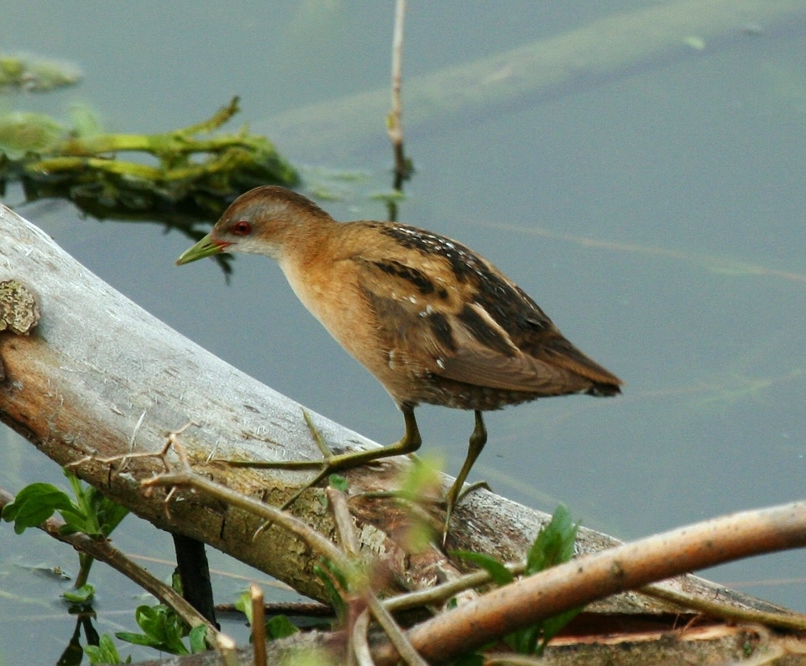 |
| Photo by H. Talpa (Wikipedia) |
Common name:
little crake (en); franga d’água-bastarda (pt); marouette poussin (fr); polluela bastarda (es); kleines-sumpfuhn (de)
Taxonomy:
Order Gruiformes
Family Rallidae
Range:
This species is found breeding in eastern Europe and Asia, as far west as Poland and Hungary, with some scattered population further west in Germany, France and even Spain, and as far east as Kazakhstan, Kyrgyzstan and southern Russia. They migrate south to winter in the Nile valley, Israel, Yemen and from eastern Iraq to southern Afghanistan and Pakistan.
Size:
These birds are 18-20 cm long and have a wingspan of 34-39 cm. They weigh 35-60 g.
Habitat:
Little crakes inhabit freshwater wetlands with dense emergent vegetation, such as marshes, bogs, lakes, slow-moving rivers, irrigated fields and wet or seasonally flooded grasslands. They are present from sea level up to an altitude of 2.000 m.
Diet:
They mainly feed on aquatic insects, such as water beetles, bugs, lacewings and adult and larval flies, but also seeds and aquatic plants, worms, snails, spiders and water mites.
Breeding:
The little crake breeds in May-August. They are monogamous and territorial, but pair bonds only last one breeding season. The nest is a shallow mound of plant stems and leaves, placed in thick vegetation near or over water, often in a raised tussock or platform of dead plant material. There the female lays 6-9 ochre eggs with dark spots, which are incubated by both parents for 21-23 days. After hatching the chicks stay in the nest for up to 8 days, after which they go into areas of dense vegetation where they are fed by their parents until fledging, about 50 days after hatching.
Conservation:
IUCN status – LC (Least Concern)
This species has a very large breeding range and the global population is estimated at 100.000-1.000.000 individuals. The overall population trend is decreasing, although some populations have unknown trends, the main threats being the destruction of wetland habitats and hunting.







